Tencent’s Arena of Valor for mobile is finally here in North America. Whether you’re new to the MOBA genre completely or you’re coming from League of Legends, Defense of the Ancients 2, Heroes of the Storm, or another MOBA, we’ve got you covered with our Arena of Valor beginner’s guide. We’ll teach you everything you need to know to get started kicking butt.
The Very Basics
If Arena of Valor is your first MOBA, you’ve got a few things to learn before moving on to other tips. On the main game mode map, 5v5 Grand Battle in the Antaris Battlefield, you will be placed in a team with four other players, and you must face five others. Each player is free to choose a character, but none may repeat. Anyone can play any role, but it’s better to strategize your picks (see Class Roles section). Each character has a passive, two normal skills, and an ultimate ability. Your normal abilities have the shortest cooldown, and your ultimate has the longest because it usually does the most damage, heals the most, or enhances you in a way that is worthy of the name “ultimate.”
Your main goal in Arena of Valor is to destroy the enemy’s crystal while protecting yours. You do this through teamwork and coordination. It usually entails killing other heroes in team fights and then pushing lanes in by killing enemy minions and destroying enemy towers.
You can also help your team by killing neutral creeps (NPC enemies) in the jungle; some of these will just give you gold, while others will give you buffs. Some of the buffs are player-specific like the Might buff, but others are team-specific like the one you get from the Dark Slayer.
In AoV, killing enemy heroes, minions, jungle creeps, and towers will earn you gold which you can spend on items that make you more powerful. You will also gain experience that lets you take more abilities and beef up the ones you already have. These are all helpful in aiding you to reach the end game goal of destroying the enemy crystal.
The Main Objective and Teamwork
The goal of any competitive game is to win, right? (Well, hopefully while having fun!) In order to win in Arena of Valor, players have to destroy enemy towers until they get to the enemy base’s crystal. Killing enemy heroes is lots of fun too, of course, but your main goal is to work together as a team and destroy that gosh darn crystal. MOBAs are filled with players who want all the immediate glory of a high KDR without having to work together as a team towards a common goal: destroying that gosh dang crystal. Sometimes this can help if the rest of the team compensates for that player’s lack of focus or if that KDR-focused player is keeping enemy players down long enough for you to push the lane as a team, but if everyone is worried about their KDR, then the enemy’s gosh damn crystal remains untouched. So, remember that it pays off in the long run to work together as a team; otherwise, the enemy will, and your own sweet crystal will be blown the heck up.
Class Warfare
Up next in our Arena of Valor beginner’s guide are class roles. They’re pretty important in other MOBAs, and this mobile one is no different. The main breakdowns in AoV are: tank, warrior, assassin, mage, marksman, and support. However, each of these classes can be a mix of another class. For example, Mina is a pure tank, but Arthur is a warrior/tank.
A tank is the character in AoV who will take the brunt of the enemy team’s damage and who oftentimes has something that will either control the enemy team with crowd control or something that will give them mobility to catch up to them. For example, Mina has both a hook to grab the enemy team and an ultimate that taunts them. This focuses the enemy’s fire on the tank, allowing the lower health, higher damage characters to quickly dispose of the taunted foes.
A warrior is kind of like a tank, but they do more damage and usually have less utility. These are characters like Lu Bu. He has an ability that will knock an enemy up in the air, but it has to be a third consecutive strike. He also has one that slows them down, but this is meant for him to go in and get the kill. His ultimate just buffs him up, giving him more life steal and survivability, allowing him to shred the enemy team. This class seemingly corresponds to bruisers in League of Legends or the squishier warriors in HotS like Sonya.
In Arena of Valor, assassins do what their name implies: they assassinate. These are characters who are meant to focus on a squishier target, usually one that is isolated from the enemy team and that would do high damage to the group in a team fight. Assassins have significantly lower health pools than warriors and tanks, but their damage output and ability to stay on a target make up for that. Butterfly is an assassin whose abilities allow her to teleport to low-health targets, slow them, and do some serious damage.
Mages are AoV’s magic users. Unlike warriors and pure assassins, who usually focus on just attack damage, mages will focus on ability power. They can do some serious damage at times, but their damage is usually less burst-oriented and more sustained. They also have abilities that are meant to either harass, initiate, or control the enemy team. Veera is a mage whose ultimate and first main ability do serious damage, with a second ability that stuns her foe. Two or three combos are usually enough to kill a foe, but the stun also helps you set up kills for teammates as well.
Up next is the marksman. They sort of correspond to League of Legends’ AD carry role. These characters tend to be more gear dependent than other classes, and thus, it’s better for you to farm gold until you can do some serious ranged damage in team fights. The first character you unlock in Arena of Valor, Valhein, is a marksman. He’s got a kit that’s set up around stunning enemies and building hunter buffs that allow him to increase his movement.
Last but certainly not least are support heroes. These heroes give up high damage or tankiness in favor of abilities that help the team. They either heal, buff, or debuff the enemy team. Peura has abilities that grant her teammates armor while slowing and damaging enemies as well as one that heals herself and teammates while increasing attack speed.
In addition to the classes, there are also roles in Arena of Valor. These are more character dependent, but each class tends to have certain roles that usually overlap with them. For example, a lot of tanks have the mobility role because they are meant to increase mobility in order to help the team win in fights.
It’s Just a Laning Phase
Just like League of Legends and most other MOBAs, Arena of Valor has a laning phase at the beginning of the game. This is where you and your team will exchange blows with the enemy team in lane while trying to farm each other’s minions for exp and gold. This is an incredibly important phase of the game, as being gold- and exp-starved leaves you weaker than the enemy team. In this phase, depending on your role, you will want to focus on getting the last hit on enemy minions to increase your gold uptake. Last hitting gives you a bit more gold than simply standing next to a minion does. This gold will allow you to buy better items faster, which will give you an advantage over foes who do not last hit. You can also harass your foes until they leave their lanes or you kill them. The former will make them weaker in the end game, and the latter will do the same while giving you some cash.
This phase usually lasts as long as the outer turrets are still in place, which isn’t that long in Arena of Valor compared to DotA or LoL. Sometimes it’s better to leave turrets up to get more gold from minion waves, but other times it’s better to push them in as fast as possible to get the bonus gold/exp you get from a turret kill. This is something that depends on your character’s early vs. late game performance and something to consider with your teammates.
Welcome to the Jungle
Jungling. A big pain in the butt for most players, but some seem to love it. This is when you spend most of the early match in the jungle instead of in a lane in Arena of Valor. This is done to give a solo lane to one of your teammates in order for them to get more last hits to maximize their gold/exp potential to make them more powerful. It also makes the jungler more powerful because they’ll be getting gold from the jungle monsters along with the buffs that they find there. For example, the Sage Golem in the picture above will give you increased cooldown reduction and a significant increase to your mana regeneration temporarily if you kill it. The Might Golem, the red one on the opposite side of the jungle, will give you basic attack damage over time and a slow to help you finish off enemies. Both of these buffs are extremely useful for popping back into lane occasionally and ambushing your foes with a teammate.
In the river, there are also creeps. The two most obvious ones are the little ghosts that float around near the top and bottom lanes. If you kill these, they will send a spirit to check out the enemy’s jungle to let you know if someone is jungling there and if they’re weak or are planning an attack in your lane. There are also three bigger creeps tucked away in the river. The Abyssal Dragon will give you and your team exp and gold; the Spirit Sentinel will give you a life regen buff; and the Dark Slayer, the strongest creep (that requires your team to help you), will give your whole team a boost to damage and health/mana regen, even if they’re not around for the kill. The last creep is great to kill before big team fights, as it can give you a significant advantage that will help you push to win.
North America’s Finally Got Talents
Talents in Arena of Valor correspond to League of Legends’ summoner spells. These are extra spells you get on a longer cooldown that can help you win a fight. There are 10 you can unlock by leveling up. You start off at level 1 with Sprint, Restore, and Recall. Restore and Recall cannot be removed. Recall summons you back to your base to heal, and restore heals you sort of like a potion would in a game like DotA 2. Just like in DotA, taking damage will negate the effect, so be careful when you use it. Some examples are: sprint, which allows you to speed up to catch your foes, execute (unlocked at level 3), which deals an AoE damage to your foes that’s great for finishing them off, and Flicker, which allows you to teleport a little bit to either finish someone off or to escape.
Killing Sprees Lead to Shopping Sprees
The reason for all the murdering you do in Arena of Valor is to get gold to get better items to be better equipped to kill again and reach that end goal. There are lots of items that grant different increases to your stats and, sometimes, unique traits that make you a more formidable combatant.
When new to Arena of Valor, it’s best to stick with the preset builds that you find in-game or find some online. The picture above is from a game where I was playing Mina. I was relying on the third build for her, which gives you a bit of burst with your control. I had gotten a little bit of gold at this point, so I had an Astral Spear (bonus attack damage and armor pierce) that could later turn into a Spear of Longinus (bonus attack damage, armor, cooldown reduction, and a stackable passive that decreases enemy armor).
Certain heroes will favor certain items, like attack-damage heroes favoring attack-damage items; tanks favoring armor, magic resist, and health items; and mages favoring ability power items. However, every player should try to build at least one or two defensive items each game that match whatever damage source their foe has the most of. For example, if the enemy team is mostly mages, you can negate a good amount of their damage by building the Medallion of Troy, which gives you cooldown reduction, a significant amount of HP, a magic damage absorption shield, and insane magic defense.
Arcana
Just like League of Legends has its runes, so too does Tencent’s Arena of Valor have arcana. They function pretty much the same. Thankfully, just like in League, they can be bought with in-game gold.
There are three colors of arcana: red, purple, and green. Red arcana usually gives some sort of buff to your attack, such as attack damage, ability power, or critical hit chance. Purple usually gives a buff to your HP, lifesteal, or movement speed. Green will give you armor and magic defense most often.
In addition to the three colors of Arcana in Arena of Valor, there are three tiers. The first tier gives you the least amount of bonuses but also costs the least, and the third tier gives you more bonuses but costs 2,000 gold per rune. The higher the tier, the higher the pure bonus or the more likely it will have a split focus in bonuses. For example, a tier three green rune called Prowess gives you +9 magic defense whereas same tier, same color Mythril gives you only +5 magic defense but an additional +5 armor.
Arcana is not as important when you’re just starting out in AoV, so don’t fret too much yet. However, as you progress, and especially when playing competitively in ranked modes or at tournaments, you will need to get full pages of maximized arcana. Which ones are best? That depends on your character and the specific builds you’re going for.
Acquiring Heroes, Skins, Arcana, Etc.
What modern game would be complete without a convoluted shop with different currencies and, of course, things to buy with real money? Arena of Valor is no different. You can buy certain heroes, skins, arcana, and more with in-game gold, gems, and vouchers you can purchase with real money.
Many Arena of Valor heroes are purchasable with either vouchers or in-game gold. The gold cost depends on the hero and usually how new they are. The lowest cost for a character with gold is only 1,888 gold, but the highest is a whopping 18,888. The lowest cost for vouchers is 399 (roughly $4 USD), and the highest is 1,199 (which can be bought for about $10 USD). Other heroes, such as Veera, are acquired by log-in bonuses, or, in the case of heroes like Ormarr, by playing a certain number of games. Zephys, at least for now, is only unlocked by making your first real money purchase in the shop.
Skins are obtained mostly by spending real money via vouchers. Some are obtained by leveling up or through special events. Others are gifts or are given out to players who rank high enough in a season.
As mentioned before, arcana is purchased with in-game gold, but it is limited to only two pages unless you use vouchers to obtain additional pages.
Gems can be used in the gem shop in AoV to get magic crystals (used in the lucky draw), arcana chests, lucky chests, and exp and gold bonus cards. Keep in mind, however, that there is a limit to the gold you can earn in-game per day, and that depends on which server you’re on.
—
I hope this Arena of Valor beginner’s guide helped you! If there’s anything that you think should be added or clarified, let me know in the comments section below as well as how you’re enjoying this mobile MOBA so far. We will be making more in-depth guides for concepts like jungling and character-specific item builds, so stay tuned for more!

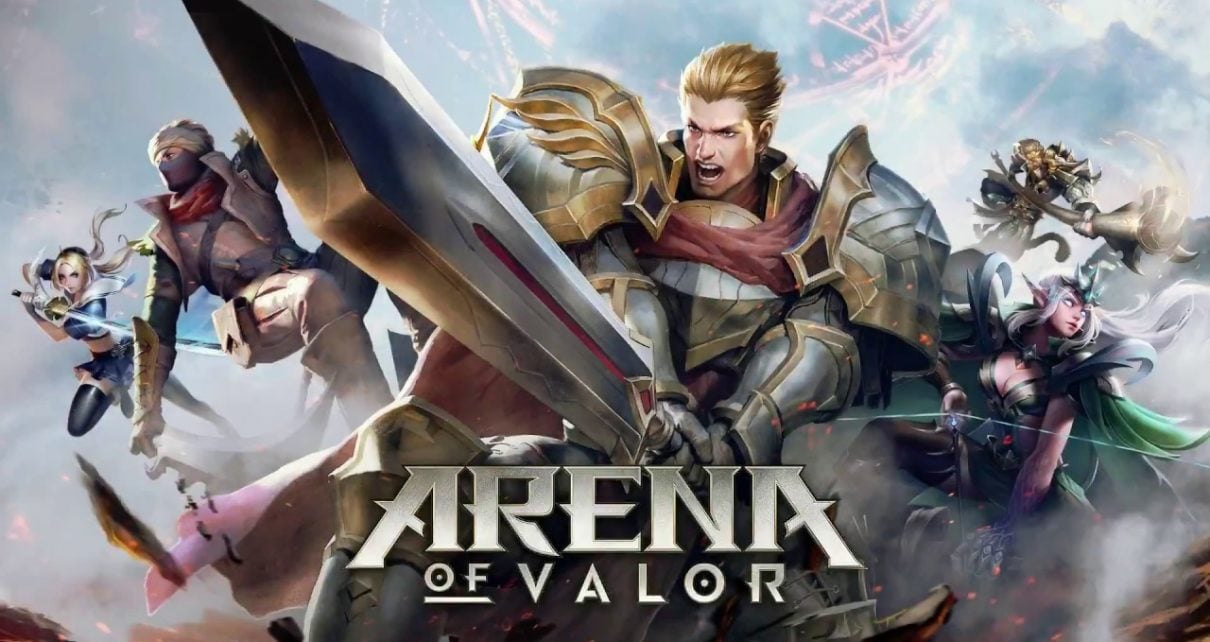
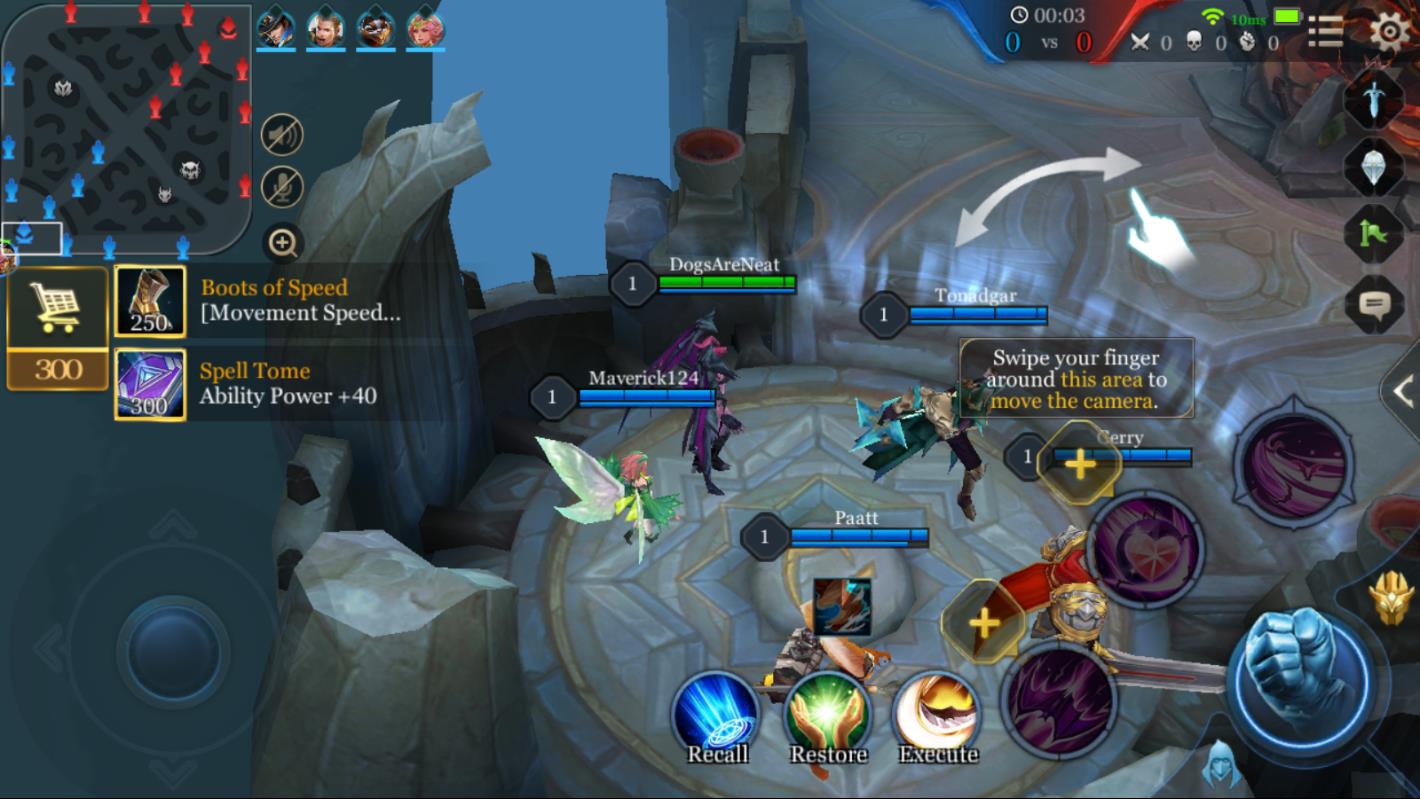
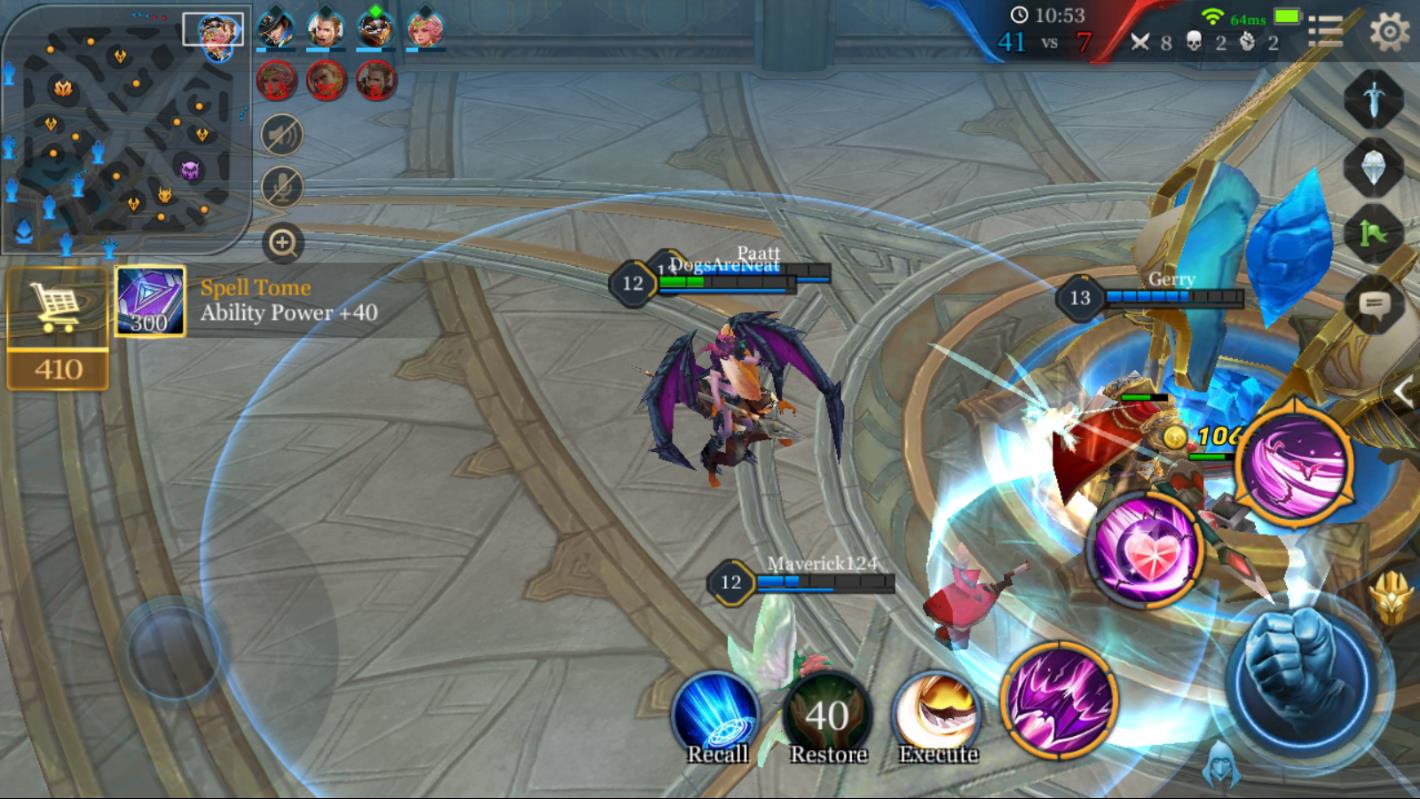
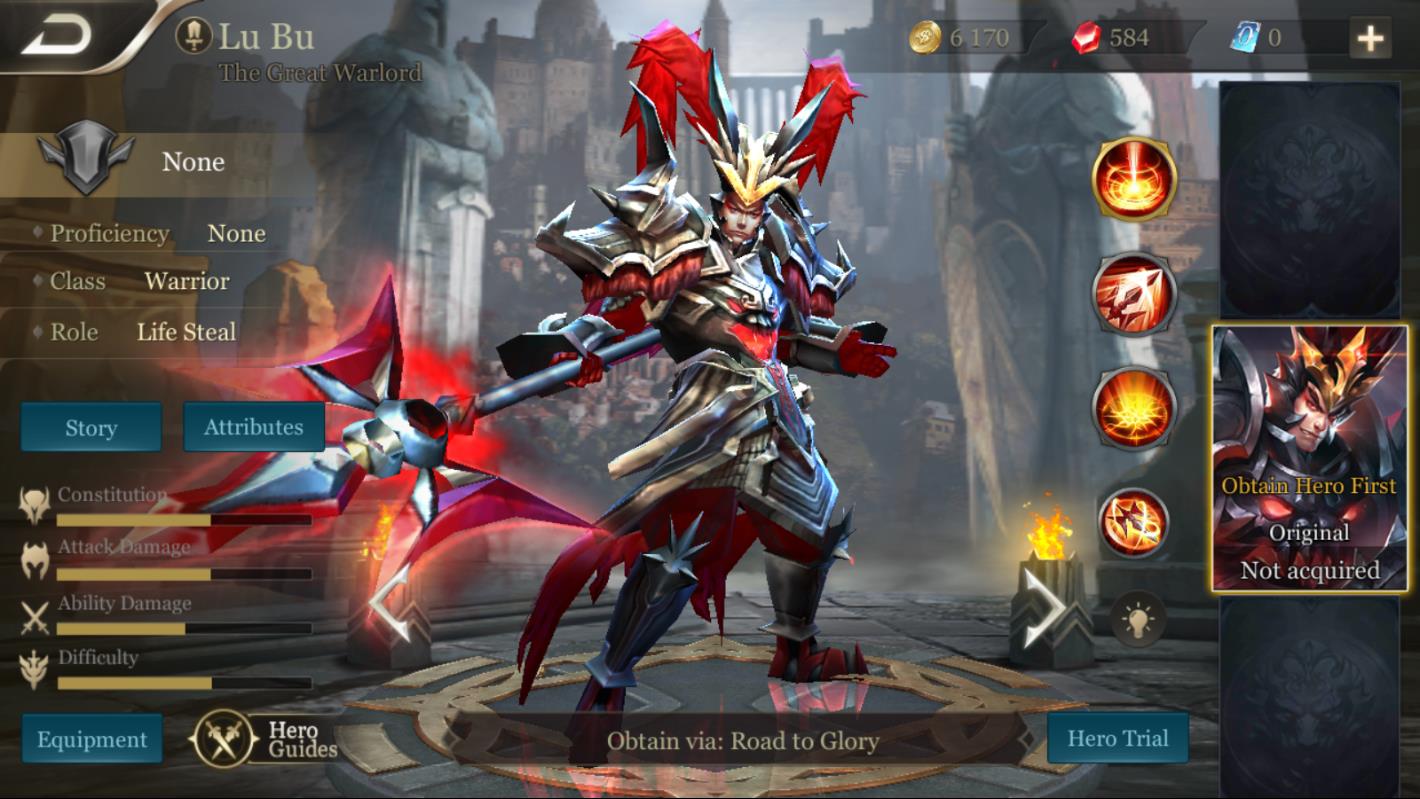
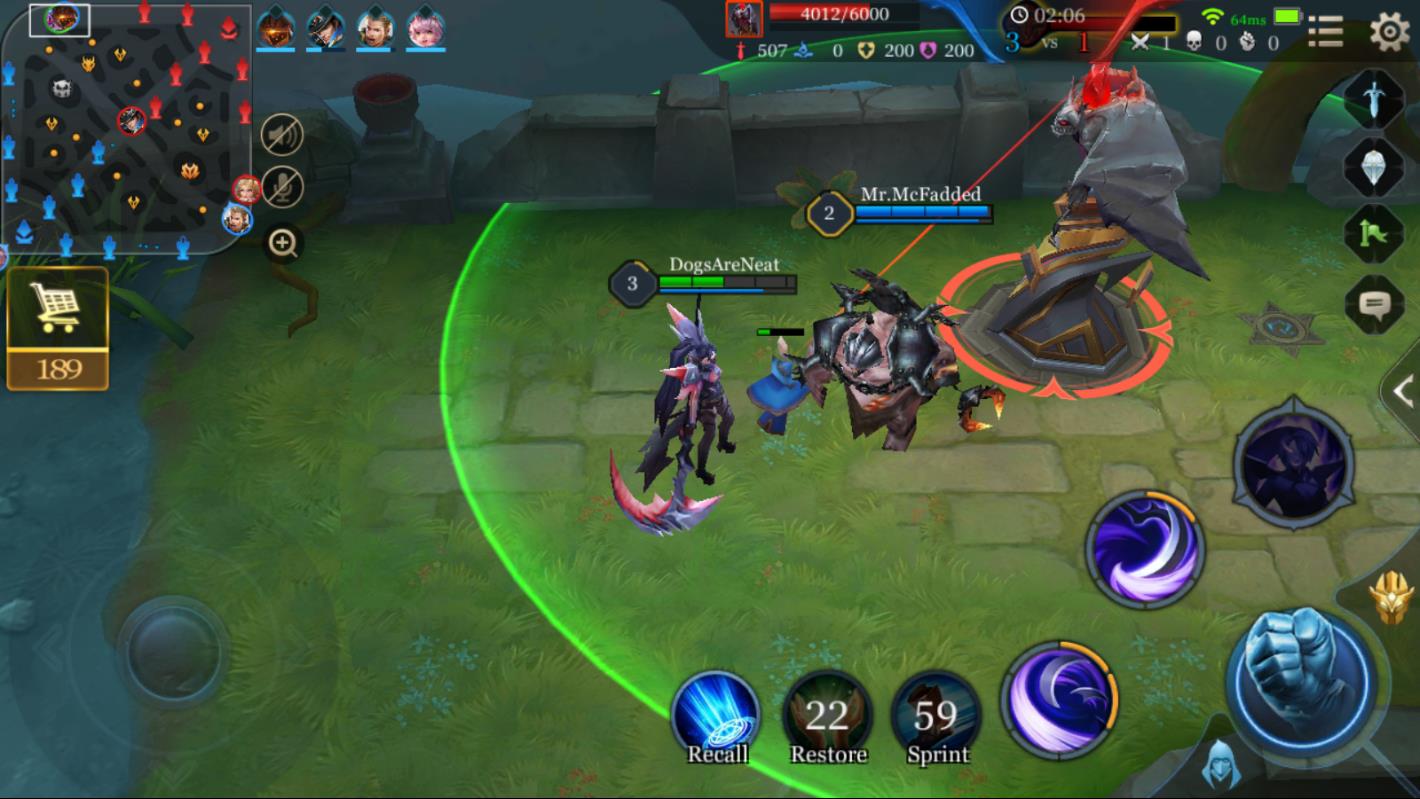
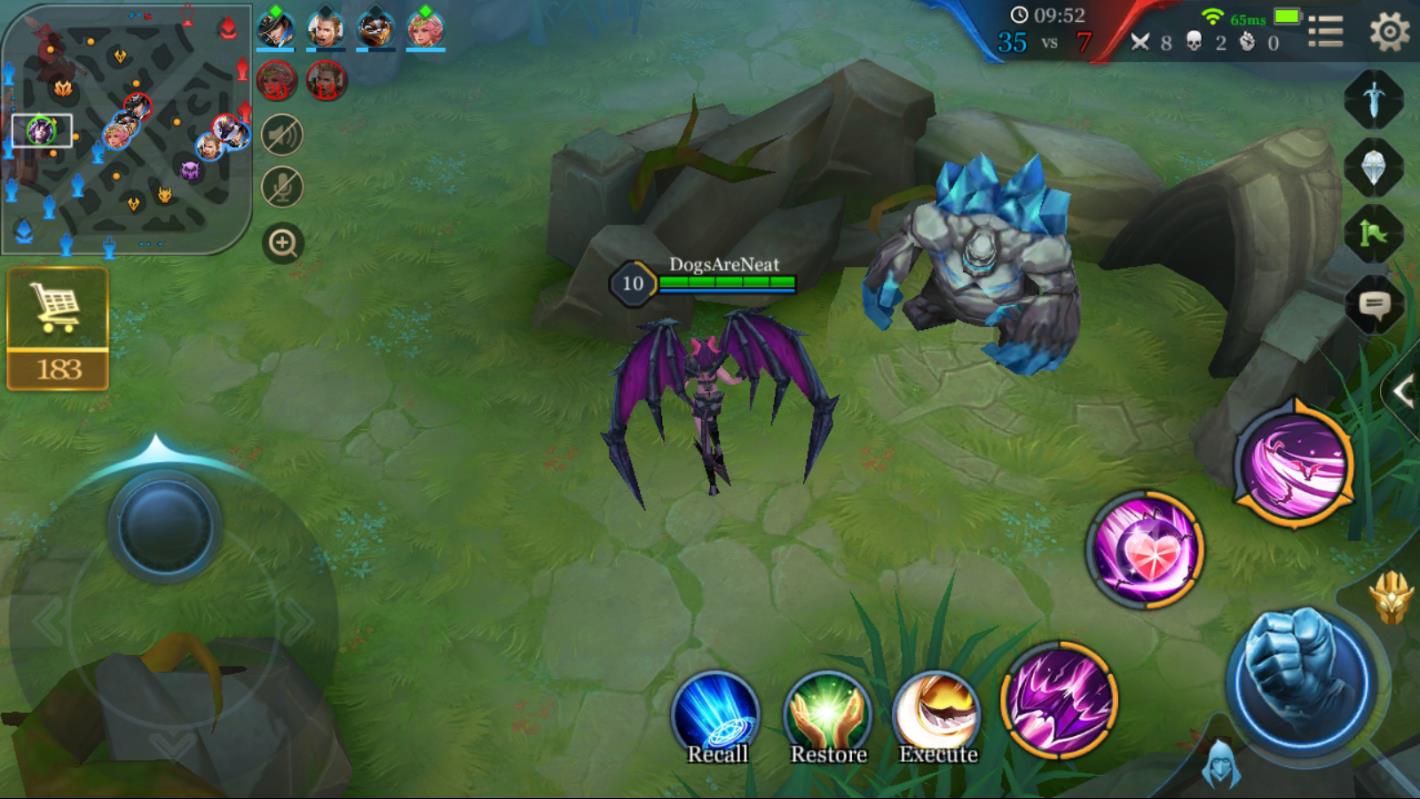
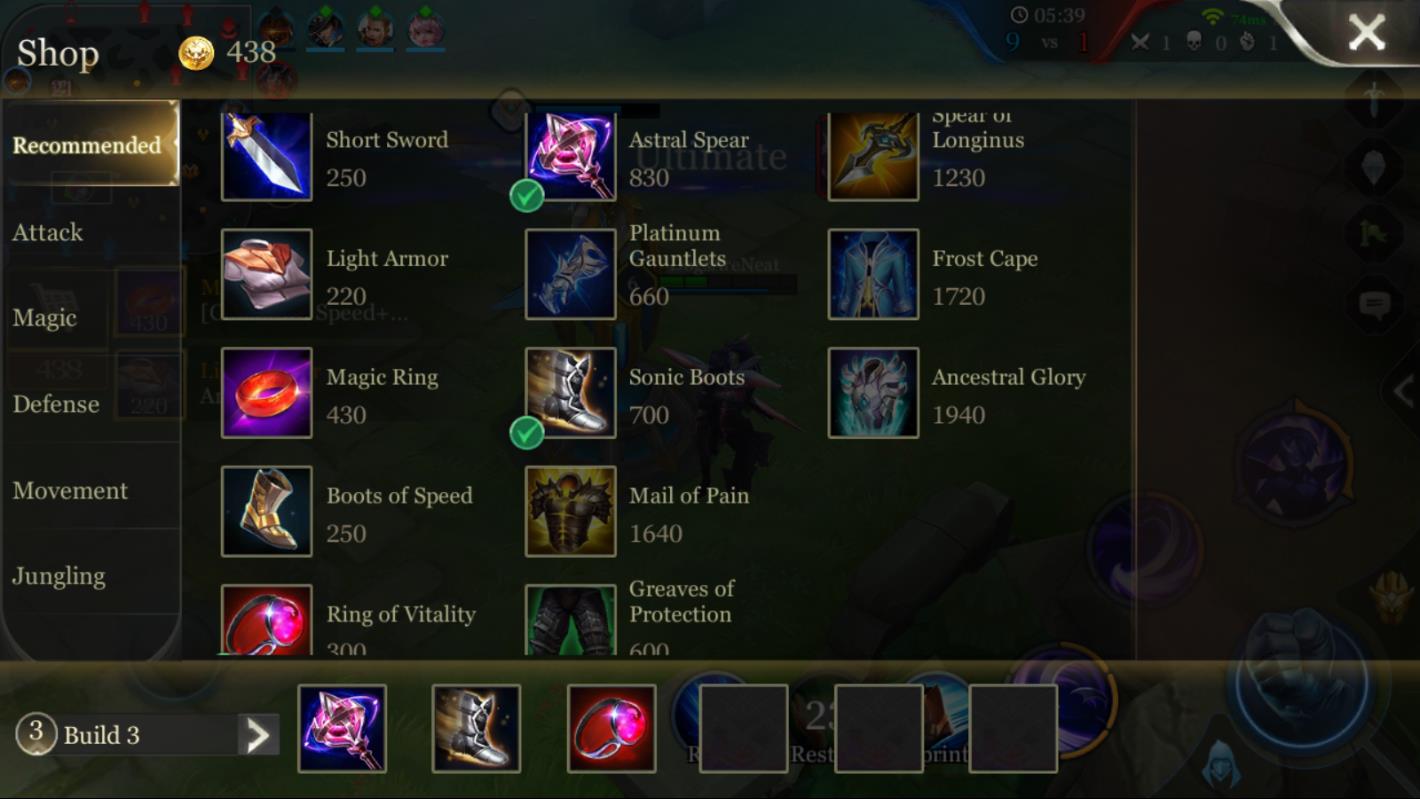
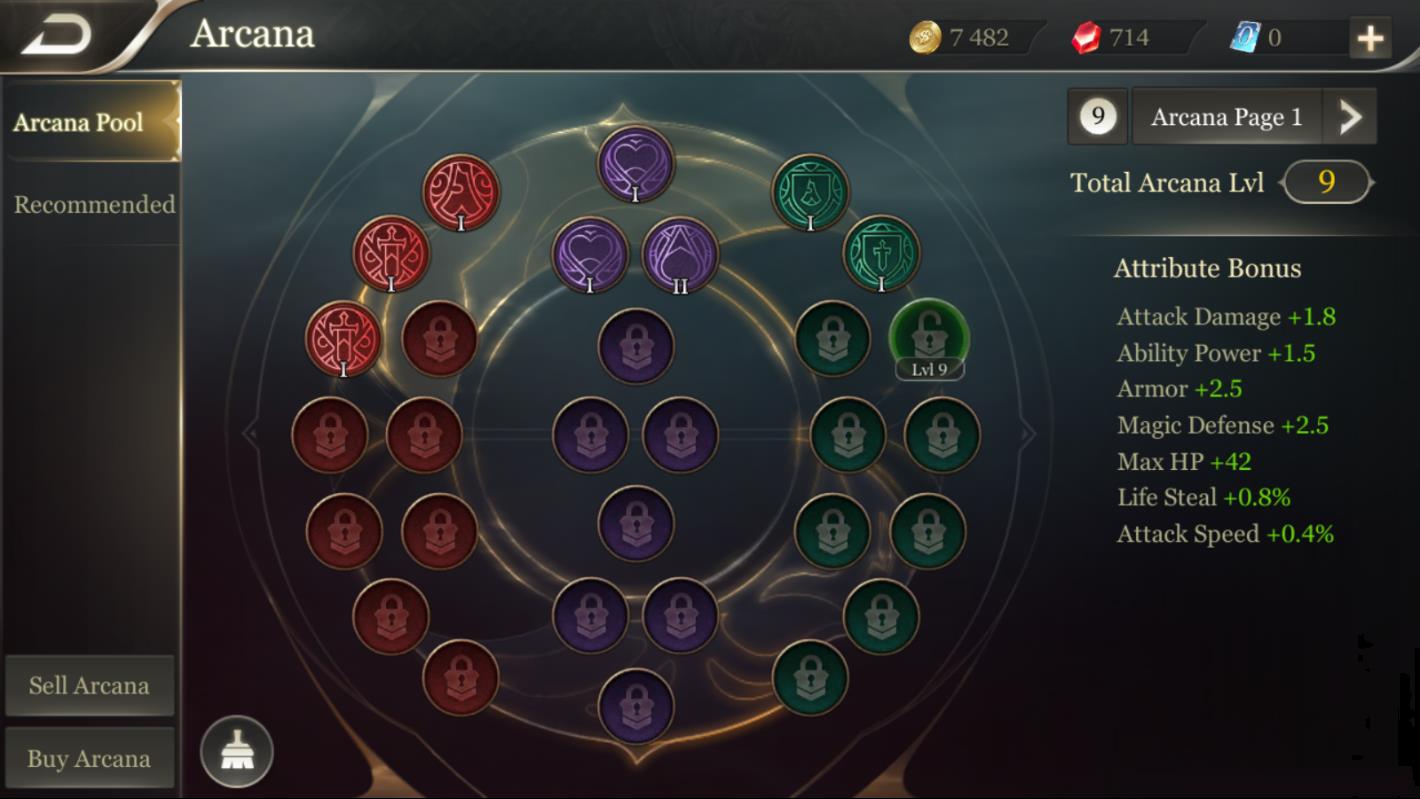
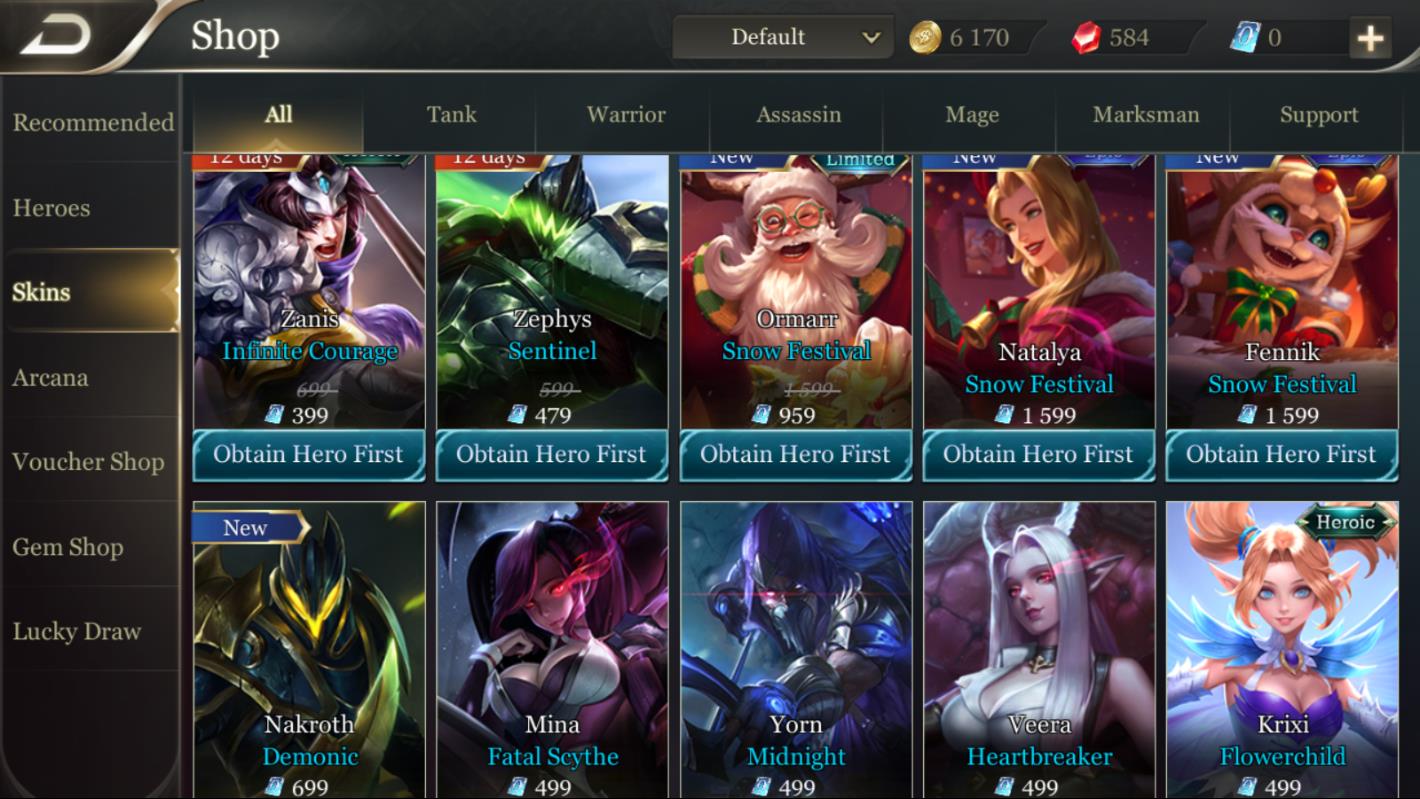



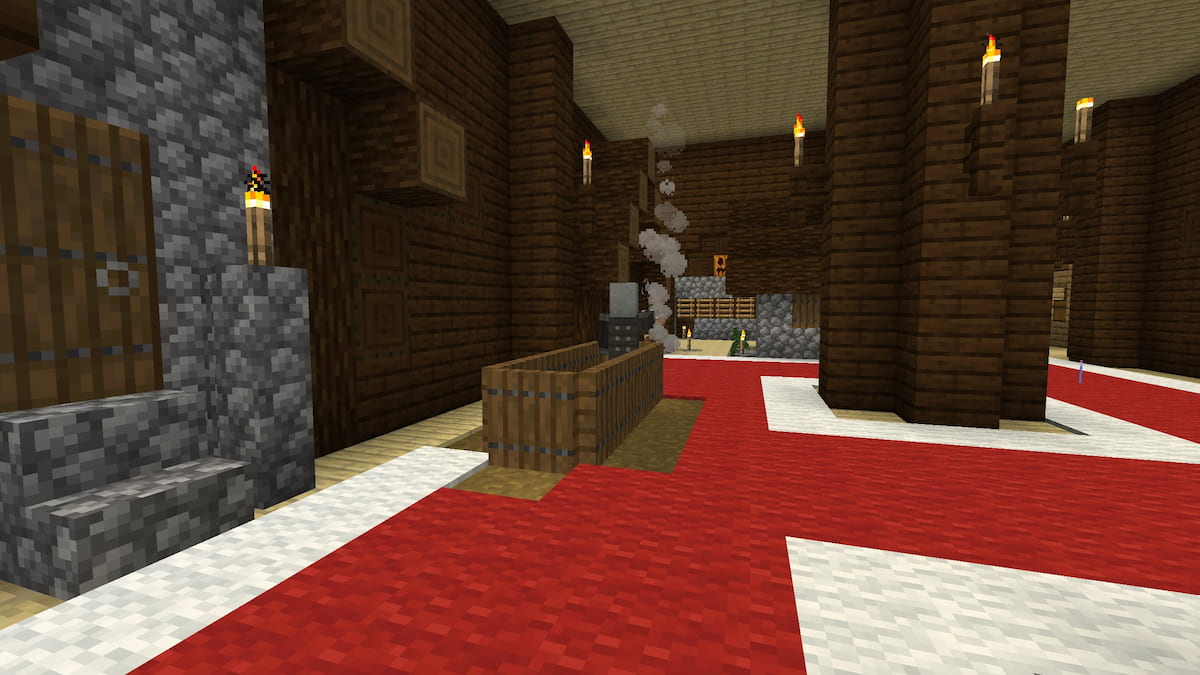
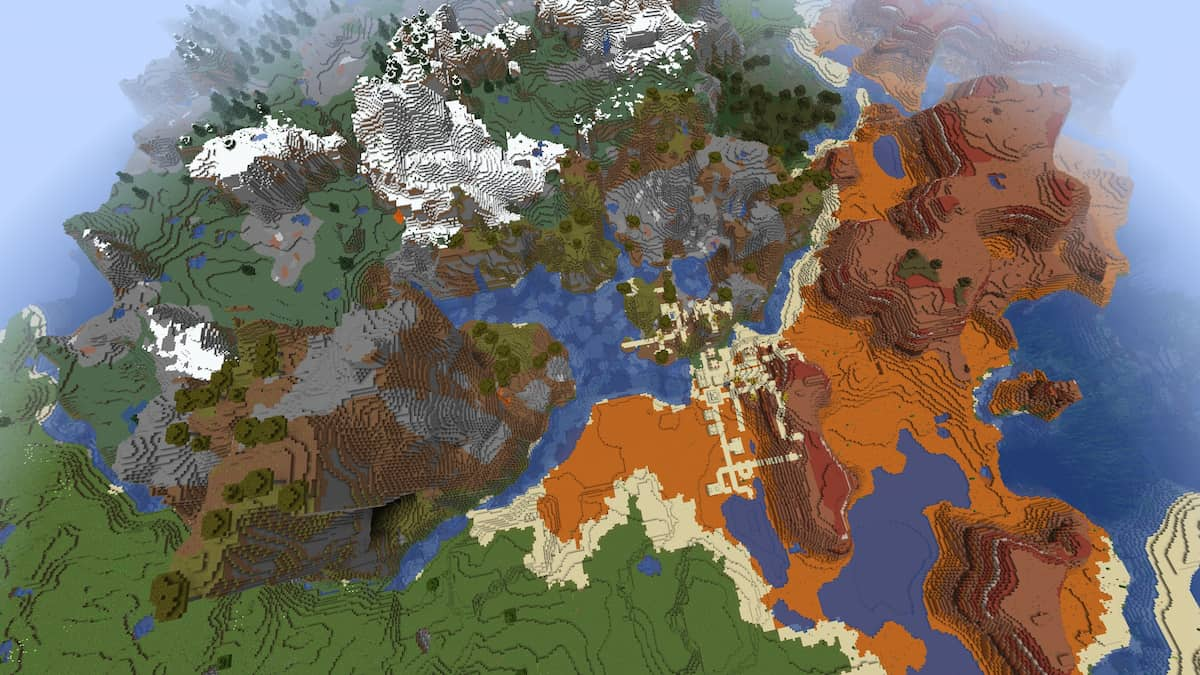
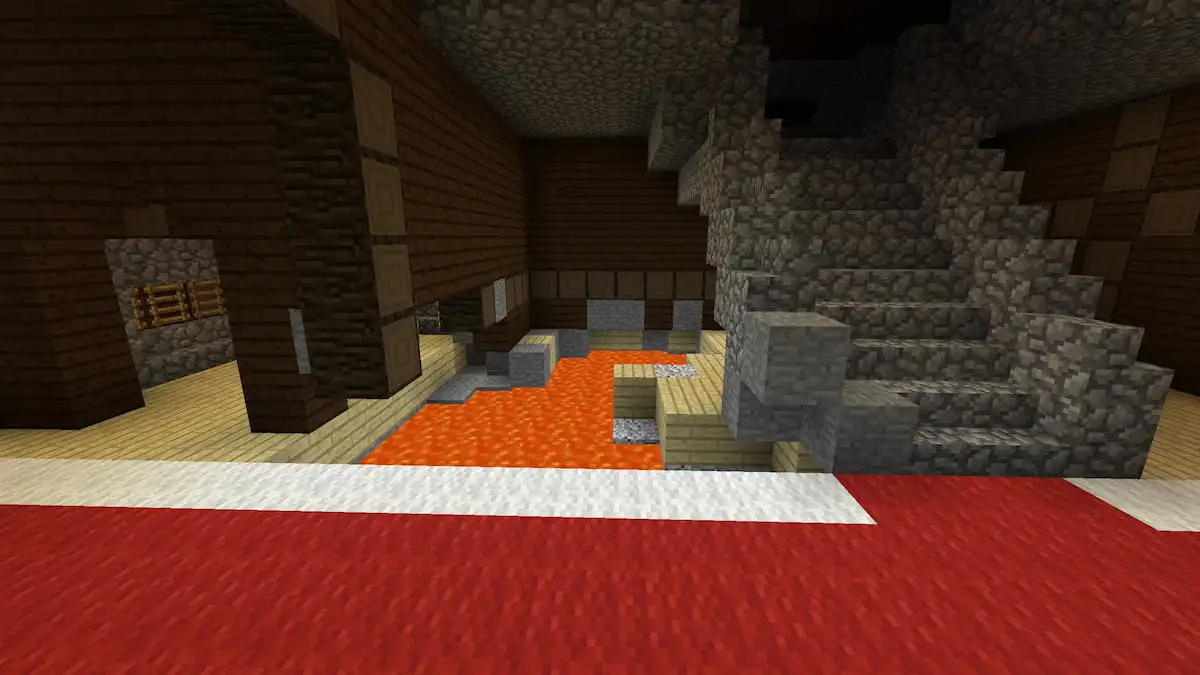
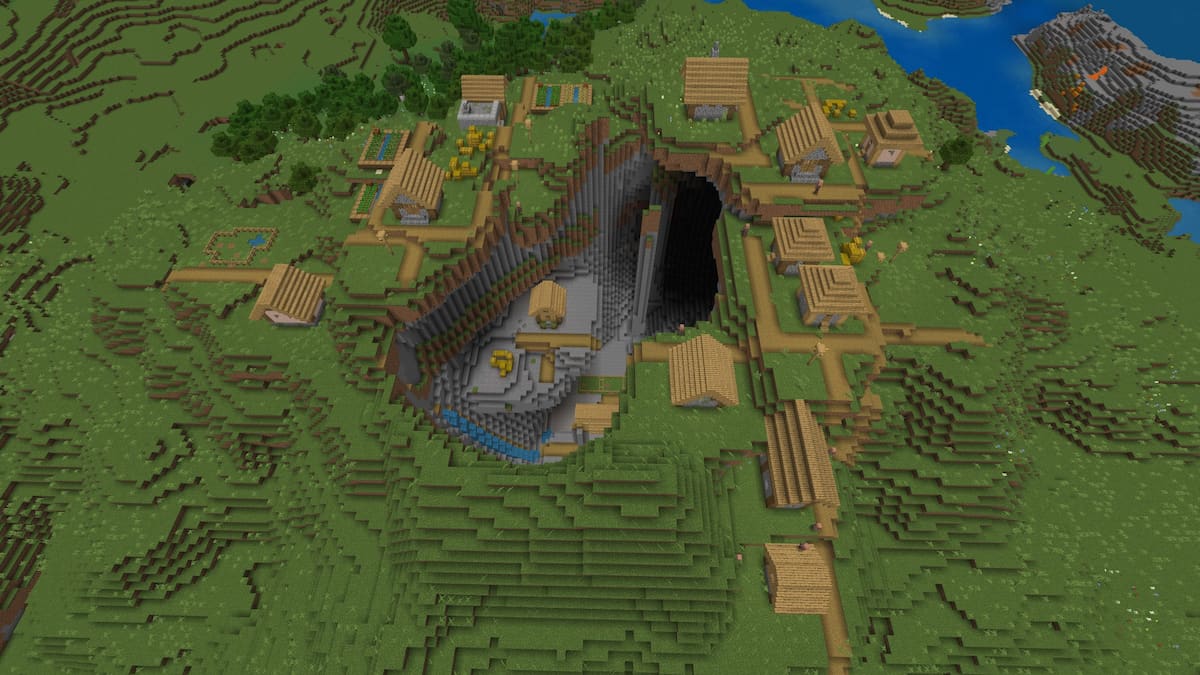
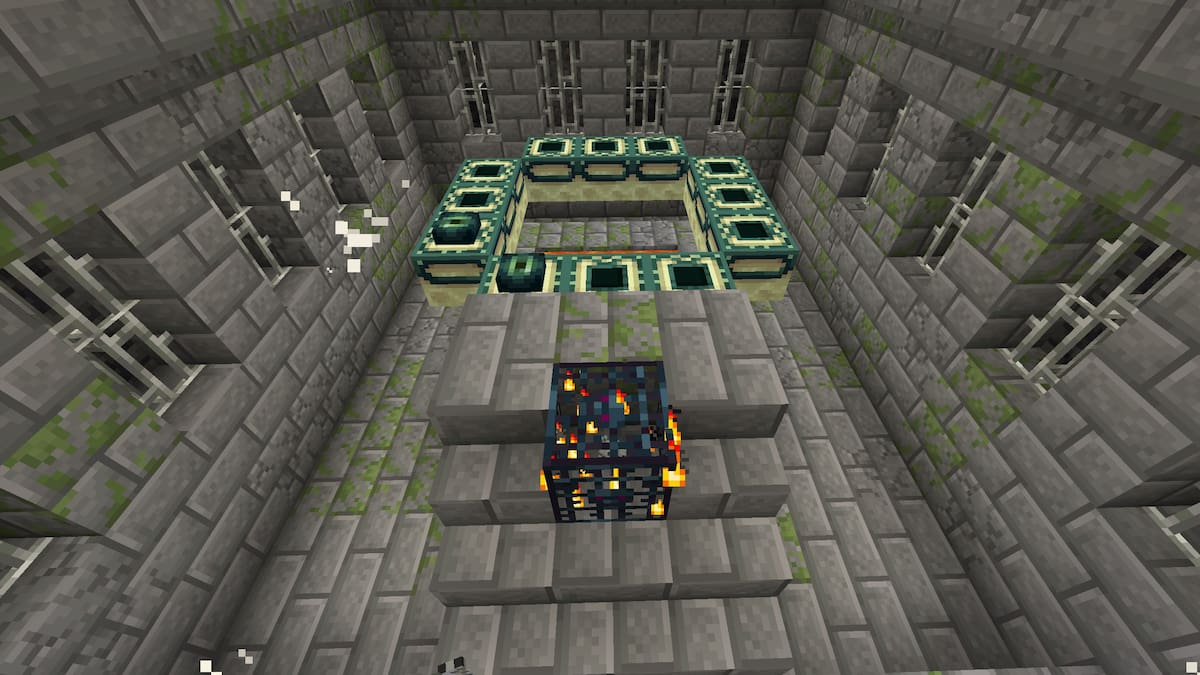
Published: Dec 28, 2017 08:55 am